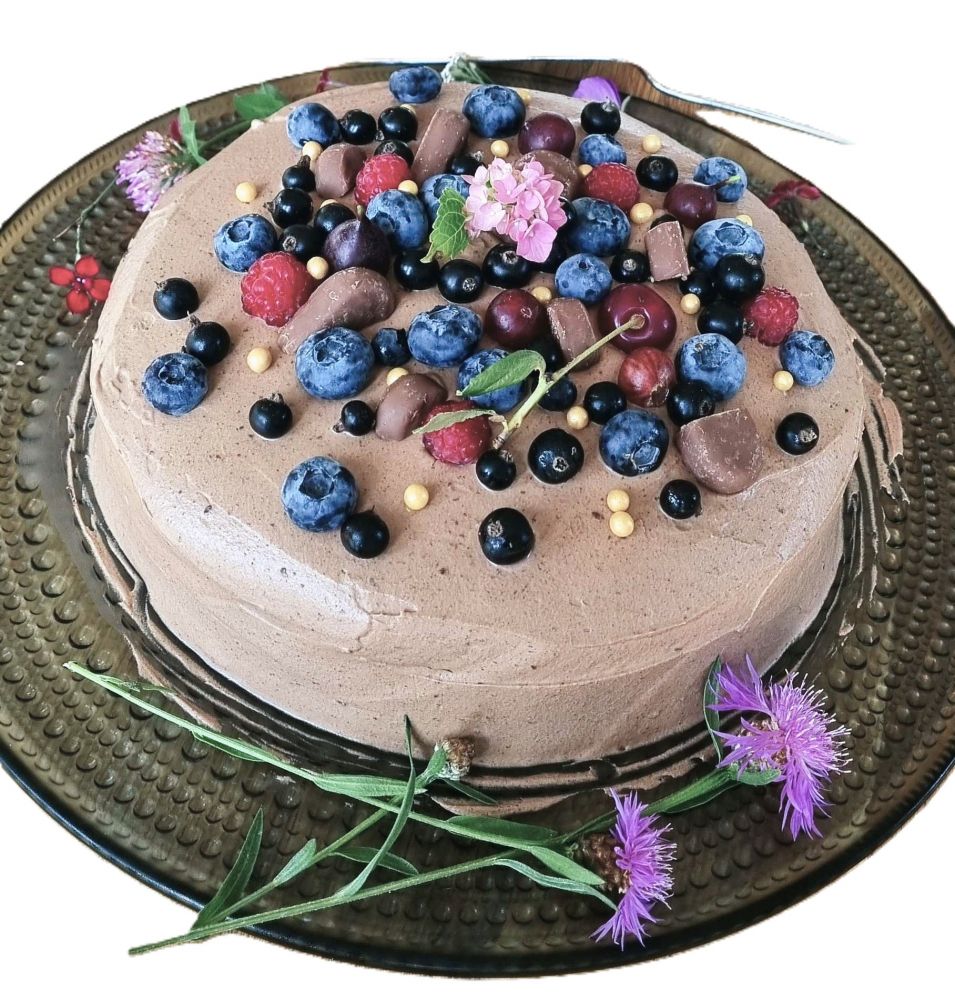Kurkilaaksossa tapahtuu
-
Kakku on kaunis ja suklaa on hyvää, mutta kaikki kukat eivät ole syötäviä. - How to make predicative sentences in Finnish
The predicative tells us what or whose something is or what it is like. The verb in these kinds of sentences is almost always olla. Predicative clauses are frequent. You hear them everywhere and you also need to use them quite often. Fortunately, predicative sentences are easy to form once you remember a few model sentences. Another great thing is that the subject of a predicate is always in the nominative.
Loma oli ihana. Elämä on ihanaa! Ystävät ovat ihania.
If the subject is in the singular and a physical thing, the predicative is in nominative case or in genitive if it tells the owner.
Sinä olet mukava. You are nice. Anna on lääkäri. Anna is a doctor. Tesla on kallis. Tesla is expensive. Onko tämä kynä sinun? Is this pen yours? Note that a negative doesn’t change the case to partitive.
Sinä et ole nyt kovin mukava. You're not very nice right now. Anna ei ole lääkäri vaan sairaanhoitaja. Anna is not a doctor, she's a nurse. Tesla ei ole kallis verrattuna Porscheen. Tesla is not expensive compared to Porsche. Kynä ei ole minun. The pen is not mine. If the subject is a material, abstract or uncountable word and the predicative is an adjective, it’s in partitive case
Kulta on kallista. Gold is expensive. Lukeminen on mukavaa. Reading is nice. Maito on terveellistä. Milk is healthy. If the subject is in the plural, the predicative is almost always in the plural partitive.
Teslat ovat kalliita. Teslas are expensive. Anna ja Matti ovat lääkäreitä. Anna and Matti are doctors. Te olette ahkeria. You are hard-working. What do you think, what are Finns like? Ovatko suomalaiset mukavia, hiljaisia, ystävällisiä, ujoja, epäkohteliaita, kauniita, rikkaita, vaatimattomia, ylpeitä vai ehkä ihan parhaita?
By applying the model clauses above, you can handle almost all predicative sentences. As always, however, there are some special occasions.
Sometimes the predicative is in the plural nominative. This happens when the subject is a definite entity, a pair or a set or a so called plural tantum -word: form is plural, but the word describes one object.
Keittiön kaapit ovat likaiset. The kitchen cabinets are dirty. Kengät ovat liian pienet. The shoes are too small. Mikon hiukset eivät ole punaiset. Mikko's hair is not red. Sakset ovat terävät. The scissors are sharp. Nämä housut ovat kalliit. These trousers are expensive. The predicate is also used to tell what material something is made of. Then the material is in the singular partitive, even when the subject is plural.
Nämä tuolit ovat puuta. These chairs are made of wood.
When studying a new language or talking to little children, you often need to tell or ask, what something is. The same logic works then too.
Nominative with a singular, countable predicative:
Tämä on kissa. This is a cat. Partitive with materials or uncountable predicatives:
Tämä on hiekkaa. This is sand. Tämä on puuroa. This is porridge. Mostly partitive plural in plural sentences:
Nämä ovat kissoja. These are cats. Nominative plural with sets and definite entities:
Nämä ovat sakset. These are scissors. One last warning about the word hyvää. When you use hyvä in the partitive in sentences like “X on hyvää.”, it usually means that something tastes good.
Suklaa on hyvää ja kakku on hyvää myös. Chocolate is good and the cake is good also. When you want to give positive feedback to your teacher after the course, please say:
Opettaja oli hyvä. The teacher was good. Don't say
Opettaja oli hyvää. because it means that the teacher tasted good. Same with negative feedback: Opettaja ei ollut hyvä.The opposite of the word good is pahaa when talking about taste.
Korianteri on pahaa. Coriander is bad. There still are situations where you can tell something is hyvää without talking about the food or drink. For example:
Barokkimusiikki on hyvää. Baroque music is good. Elämä on nyt tosi hyvää. Life is really good now. Palvelu oli hyvää. The service was good. In these cases, the opposite of the word is huonoa. Again with the negative feedback for your teacher, don’t use the word paha if you don’t want to tell that your teacher is a bad person (Opettaja oli paha.) or that your teacher tasted bad (
Opettaja oli pahaa.) If it happened so annoyingly that the teacher was not good, please say: Opettaja oli huono.If you found this little lesson useful, don't hesitate to ask for more information. You can send me a question via the contact form.
If you feel that learning the language in this way, by examining a specific sentence type, will help you to understand and speak Finnish, please see the course presentation and contact me for further studies.
Tagit: predicative partitive nominative clause types Takaisin






